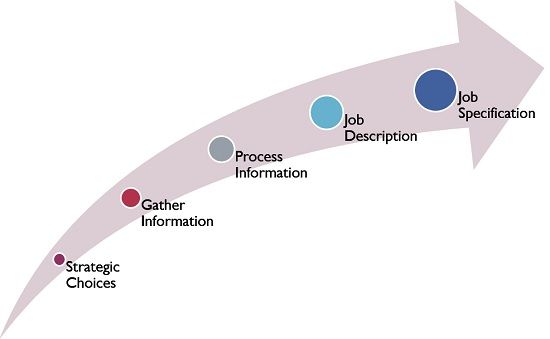Definition: Job analysis refers to the process of systematically identifying, obtaining and recording all the facts and details concerning the job through various methods. It encompasses gathering information related to the knowledge, skills and abilities (KSA) which the job holder must have, to perform the job satisfactorily.
Here knowledge implies the degree to which the incumbent is accustomed to the job. Skills can be understood as the candidate’s capability to run the system/machine or use the tools. Abilities specify the physical and mental attributes required to perform the tasks.
Job analysis involves identifying and ascertaining all the duties and responsibilities of the concerned job, along with the prior requirements, and its relative importance with respect to the other jobs in the organization. It serves as a guide in the preparation of Job Description and Job Specification.
Job analysis helps in placing the right person in the right job. For this purpose, the analyst must identify the activities involved, tasks to be performed, the way tasks are accomplished and the essential qualities possessed by the incumbent for the completion of the tasks effectively.
Process of Job Analysis
- Strategic Choices: Firstly, an organisation needs to make strategic choices, concerning the job analysis. These choices are related to:
- Degree to which an employee is involved in the process.
- Sources of collecting information.
- When and How often analysis is conducted.
- Level to which details are to be collected.
- Orientation, i.e. past and future.
- Collection of Information: In the next step data is gathered, which mainly deals with three aspects:
- Type of data to be obtained: It focuses on the basic job needs
- Person who collects the data: He/She may be the job analyst, supervisor or incumbent.
- Methods applied in collecting data: A number of techniques can be applied which may be an interview, checklists, questionnaire, diary method, observation and so forth.
- Process Information: Once the information is collected by the concerned individual, it is then transformed in a way, so that it helps in job documentation.
- Job Description: The processed data will result in job description which describes the entire job profile to the management and the incumbent as well. It lists out the job title, duties, responsibilities, tasks, activities, scope of work, objectives, authority limits, etc.
- Job Specification: Job specification specifies all the employee qualifications, in the sense of physical, mental, emotional and behavioural abilities.
It highlights the educational qualification, experience, knowledge, skills mental abilities, age, gender, aptitude, reasoning, etc. possessed by the incumbent to perform the job and the duties related to it satisfactorily.
The data gathered through job analysis is useful for various human resource functions such as Human resource planning, recruitment and selection, induction, training, job evaluation, remuneration, performance appraisal, health and safety, promotion and transfer, career planning, and so on.
An ideal job analysis covers all the important aspects such as tasks and duties, work environment, superiors and subordinates, KSAs required, etc.


Leave a Reply